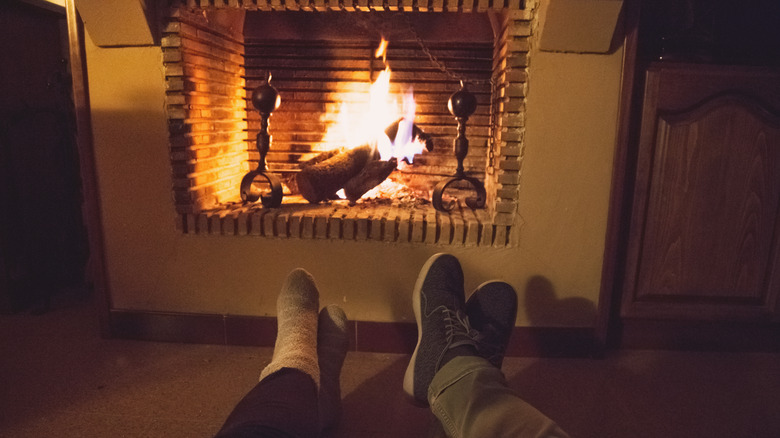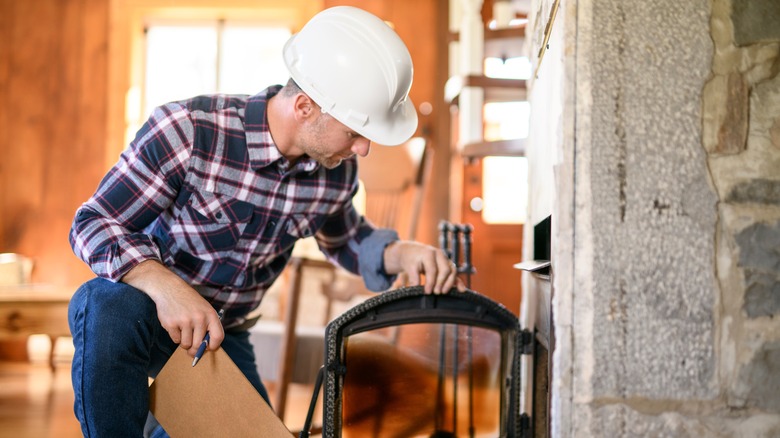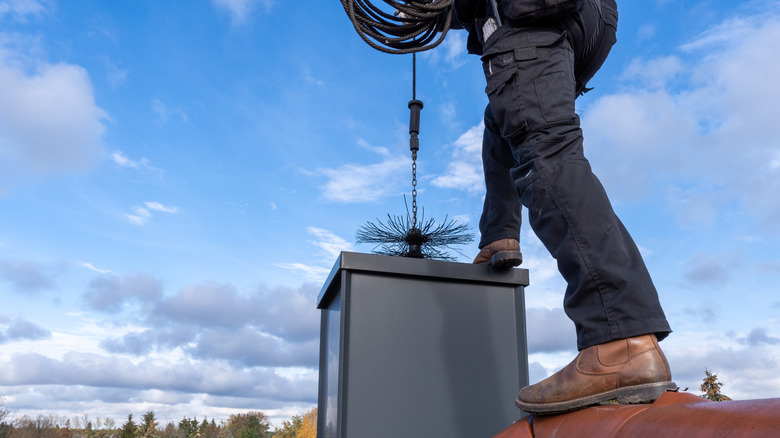The Best Time Of Year For A Fireplace Inspection (And What You Should Be Checking For)
When the weather turns cold, relaxing by the warmth of the fireplace is the perfect way to spend a cozy evening at home, and regular fireplace maintenance can ensure that it is working safely. Although you may not be thinking of heating your home just yet, don't put off a fireplace inspection. According to the U.S. Fire Administration, 87% of home heating fires are those confined to chimneys, flues, and fuel burners. Chimney fires are usually caused by dirty chimneys when the black creosote that builds up inside the chimney catches fire. Fortunately, an annual inspection and cleaning can prevent fires, and fall is the best time of year to do it.
Regardless of the type of fireplace you have in your home, all gas and wood-burning fireplaces benefit from regular cleaning and annual checks, and a fall inspection is vital to get ahead of potential issues, deal with unexpected repairs, and prepare for the winter season, when you'll need the heat the most. A thorough cleaning and inspection from a certified chimney sweep will find issues such as creosote buildup, structural damage to the fireplace and chimney, and even nesting animals that could pose a safety risk. In addition, regular maintenance can protect your family from carbon monoxide poisoning as well as prolong the life of your fireplace and chimney.
Why fall is the best time for a fireplace inspection
A fireplace inspection can determine if your fireplace just needs a cleaning, you have more pressing structural issues needing repairs, or there's a reason you need a new chimney liner. In addition to preparing your home for winter, fall is the best time for an inspection due to the favorable weather. The icy conditions in winter and rain in spring and early summer can make conducting an inspection difficult.
Be mindful to schedule your inspection early in the fall to allow plenty of time for repairs to be completed before winter arrives. Since many people will be calling at this time of year, putting it off until late fall can result in longer wait times for fixes or upgrades. The ideal time for a fireplace cleaning and inspection may be in late September, once the family is settled back into the school routine, or early October. However, there are times when you can't wait. No matter the time of year, if you notice signs of wildlife nesting in your chimney, storm damage, or other indications of damage, don't wait to call a professional.
Fall fireplace inspection checklist
To inspect your fireplace on your own, start by cleaning and removing all soot and ash from inside so you can easily see signs of wear or damage. Check the brickwork for damage to the masonry. Open and close the damper to make sure it is working, inspect the glass doors, and look for soot buildup inside the fireplace. Open the flue and shine a flashlight inside to look for signs of buildup. Inspect inside the house around the firebox and chimney for moisture, discoloration, or strange smells. Don't overlook the chimney. The chimney plays an important role in removing smoke and dangerous gases from the house, so be sure to prepare your chimney for winter use. Inspect the masonry, chimney cap, flashing, and have the chimney cleaned.
While you can inspect the fireplace and make sure it is clean, there are times when you want to call a professional to handle the job. A professional chimney sweep is trained and equipped to provide a thorough cleaning of your chimney and fireplace and inspect all components of the system. They can cost, on average, between $120 and $380, which is well worth the price for your safety and peace of mind.


